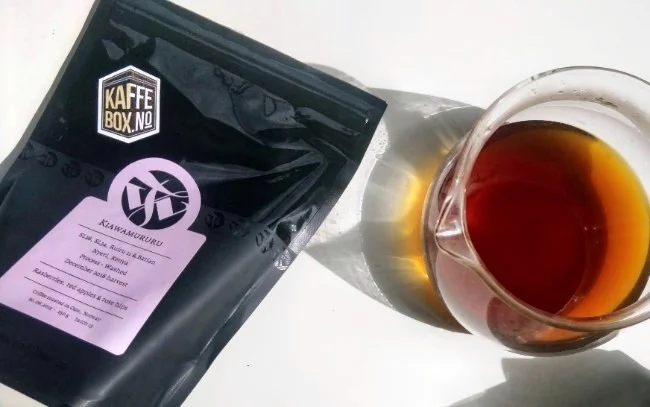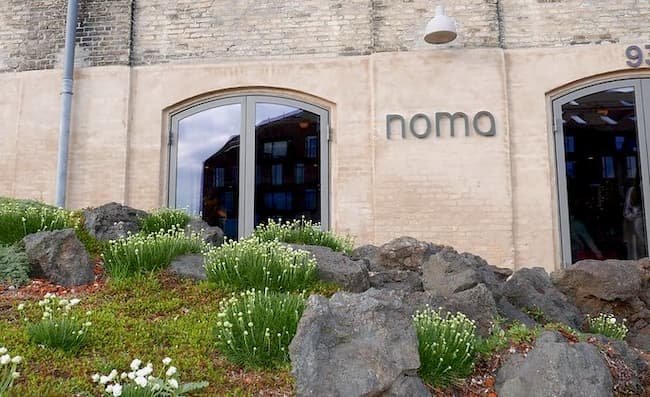The Danish restaurant Noma has recently introduced a game-changing brewing technique to its coffee program.
Most restaurant coffee tends to be somewhat of an afterthought, so seeing the effort Noma has put into its coffee over the years is refreshing.
The new coffee technique/recipe is so fascinating and flavorful that I believe every specialty coffee aficionado with an espresso machine should try it at least once.
It marries an espresso machine’s consistency and strength with the best pour over characteristics.
The result? A sort of fusion between fruity modern specialty brews with the strength of more traditional coffee.
Wendelboe is the mastermind
The brewing method was developed by Norwegian coffee maestro and 2004 Barista World Champion, Tim Wendelboe.
Wendelboe has now been collaborating with Noma for over a decade.
He recently divulged the brewing process on his podcast, alongside Carolyne Lane, who is responsible for Noma’s coffee and tea program. (The entire podcast is worth checking out, whether you’re a foodie or a coffee geek).
Tim Wendelboe is, of course, famous for pioneering a particular ultra-light roasting style. This style is usually called a “Nordic” or “Scandinavian” roast. When Noma first started, the idea was to use ingredients solely from Nordic countries. However, coffee requires tropical temperatures and elevation to thrive. Denmark is flat and cold.
But perhaps one could argue that the coffee still has a “Nordic” vibe due to its Wendelboesque touch?

From thin pour over to thick ‘Nomaricanos’
Previously, Noma served coffee brewed on a simple Hario V60. This method, however, had its challenges; pour-over coffee can be inconsistent, particularly in a bustling restaurant where staff frequently rotate.
Furthermore, light roasts brewed via pour-over usually lack a strong punch. Consider the clientele of Noma – while many are serious foodies, not all will appreciate fruity third-wave coffee. For those accustomed to a rich, chocolatey espresso at the end of a meal, a thin, acidic Kenyan coffee might be a shock.
As I mentioned in my big article about restaurant coffee a few years ago, coffee is the final impression after a long, hopefully delicious, evening at a restaurant. Not sending your guests home with a less-than-stellar final impression is critical.
René Redzepi, co-founder of Noma, has previously expressed how the fruity pour-overs received more pushback than all the avant-garde dishes he serves. This is quite revealing, considering the unconventional dishes that Noma offers.
(I last visited over a decade ago and still remember many of the distinct “concoctions” 😲).
However, it seems Noma and Tim Wendelboe have finally discovered the perfect coffee for a fine dining restaurant.
The new recipe is both consistent to make, and noticeably stronger than your typical pour over. It strikes a balance between an Americano and a cup of filter coffee, with a TDS (Total Dissolved Solids) of 1.80.
For comparison, a common cup of coffee has a TDS of 1.20-1.35, so this slight increase in strength is enough to make a noticeable impact after a substantial meal.
Noma’s Coffee Recipe
1. Coffee Preparation:
- Use 23g of coffee in a 25g basket.
- Ensure the coffee is of a very light roast.
- The grind size should be typical espresso (or just slightly coarser than a standard 9 bar 1:2 shot)
2. Basket Preparation:
- Place a paper filter at the bottom of the espresso basket.
- Opt for a high flow basket. A VST basket is recommended.
3. Portafilter Ready:
- Tamp the coffee evenly and firmly.
- Lock in the portafilter to the espresso machine.
4. Setting Up the Machine:
- Adjust the espresso machine’s temperature to 93 degrees Celsius.
5. Brewing:
- Activate the espresso machine.
- Brew until you have approximately 180ml of espresso concentrate. This process should take between 40-50 seconds.
- Aim for an espresso concentrate with a TDS (Total Dissolved Solids) of 3.
6. Filtering:
- Strain the espresso concentrate through a rinsed V60 filter to ensure clarity and purity.
7. Final Touch:
- Add 120ml of hot water to your strained espresso concentrate for a well-balanced cup.
Voila! You now have 3 Americanos each measuring 100 ml. They will be clean, nuanced, robust, and strong enough to satisfy regular coffee drinkers.
Additional tips
Many readers might not have a 25g espresso basket at home. Don’t worry, the recipe can easily be scaled down to fit the basket size you have. I’ve used this technique with 15g and 18g baskets and achieved delightful results. I also recommend adding a puck screen on top of the puck for extra cleanliness, but this is optional.
The most challenging aspect of this recipe is remembering the numbers for output and dilution. But you can just refer to this chart:
| Input (g) coffee | Output (g) brewed | Dilute (g) |
|---|---|---|
| 10 | 78 | 52 |
| 15 | 117 | 78 |
| 18 | 140 | 93 |
| 20 | 156 | 104 |
| 23 | 180 | 120 |
Determining the grind size isn’t too difficult. You should aim for a slightly faster flow than your regular espresso, so err on the side of a coarser grind than a finer one. But, there’s some room for adjustment.
If you have a refractometer, double-checking your numbers’s a good idea. You want 3 TDS of the concentrate and 1.8 TDS of the final, diluted brew. If you don’t hit these numbers, you might have to adjust slightly.
Coffee selection is crucial! A clean/Nordic roast is necessary for the best results. It’s not enough for the roast to be labeled as filter coffee.
I brewed this with a Kenyan roast that tasted great at a 19% extraction on V60. However, it didn’t quite work for this recipe – this approach will push the coffee to a 23% extraction, so any hint of roastiness will be amplified.
The verdict
This coffee is part of a growing trend where “filter” coffee style brews are pulled via an espresso machine – reminiscent of the allongé, modern lungo, and café crème.
The standout aspect of the coffee is that it tastes as clean as filter coffee due to its double filtration. Yet, it will undoubtedly appeal to many “traditional” coffee drinkers as it offers more robustness and strength compared to the typical third-wave beverage.
Of course, if you’re a restaurant, this coffee also makes a lot of sense. Manual brewing is finicky and temperamental. An espresso machine is more consistent and if you’re going for maximum extraction every time, then the result will always be repeatable. The only thing left to do is adjusting the grind size.
Now the only big question left is the name. Tim Wendelboe has proposed the term “Noruego” (Norwegian in Spanish). But if you ask me the answer is clear: Nomaricano is the only right name!
Featured Image: Lou Stejnskal | Source
